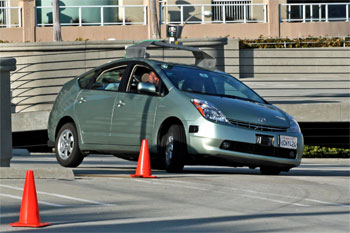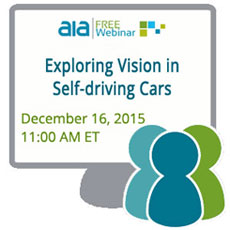Word on the street is that autonomous vehicles are safer than humans, with the potential to reduce accidents, fuel consumption, and congestion. Fully autonomous vehicles are not expected any time soon but semi-autonomous ones that assist with parking and avoiding accidents are upon us.
Car manufacturers like GM have already implemented safety technologies on their cars and trucks. Automated systems such as side blind zone warning and automatic park assist use camera sensor technologies to warn human drivers when they are approaching too closely.
Even bolder, Google has been testing its fleet of fully-autonomous Toyota Priuses on public roadways, as well as its’ autonomous golf carts on the Google campus. You can read the Spectrum IEEE blog post and access a video there to learn exactly how the autonomous vehicles work. To summarize, a laser range finder is mounted to the roof of the car to generate a detailed 3D map of the environment that the car’s computer then coordinates with high-resolution maps of the world to orient itself, avoid obstacles and obey traffic laws! Pretty nifty.
The vehicle is equipped with strategically positioned sensors: four radars mounted on the front and rear bumpers that enable the car to deal with speedy traffic on freeways; a camera positioned near the rear-view mirror that detects traffic lights; and a GPS and other equipment that work together to determine the vehicle’s location and track its movements.
Cameras being used on the autonomous vehicles for obstacle and object detection, as well as lane/road following, are typically monochrome because the use of color-based recognition outdoors is complicated to achieve. But this is slowly changing as sensors become more sophisticated and cameras are better able to manage diverse and large amounts of data.
Autonomous vehicles are coming. As imaging technologies advance, including sensors, cameras, lenses, lighting, interfaces, artificial intelligence, and computing, autonomous vehicles will change the driving paradigm, affecting our society, our laws, and our behaviors. They may even eliminate accidents due to human error, negligence, and risky behaviors. All in all, they certainly provide an interesting look into the future!
The Automated Imaging Association will be presenting a FREE webinar 'Exploring Vision in Self-Driving Cars' on December 16th at 11 am. Click here to register http://www.visiononline.org/events/event.cfm?id=297.
